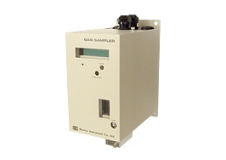Clean Water Production
The water and wastewater industries produce many toxic and flammable gases that form a hazard for equipment and personnel. The gas hazards vary considerably depending on the application, location and process. This article provides some insights about water treatment and hazards associated with clean and waste water treatment.
Before clean water becomes suitable for human consumption, it needs to be filtered to remove particles before it is disinfected with either ozone or chlorine to kill bacteria in the water. Once disinfected the water is then dosed with sodium bisulphate to reduce the PH levels before finally being filtered through carbon beds to remove any odours and tastes.
Chlorine is the traditional disinfectant used in water treatment – in most countries it is a legal requirement, even if other non-chemical methods (such as UV disinfection) are used, as it provides residual disinfection downstream. Everything in the chlorination process, from the chlorine gas storage tanks to the final production of clean water, should be properly monitored.
Waste Water Treatment
Sewage treatment is the process of removing contaminants from waste and sewage water. This process includes physical, chemical, and biological processes removing these contaminants.
How does it work? Sewage enters the treatment works and is screened to remove any large objects that may damage or hinder the treatment process. The sewage is then treated in settlement tanks to remove the particulates and bacteria before it is discharged to the watercourse. Sewage sludge is a by-product of sewage treatment and has to go undergo further treatment before being suitable for disposal or land application as it contains high levels of sulphates and methane.
Given the fact that there are a high number of toxic and flammable gases are present in the waste water process, both fixed and portable detectors are required. In general, gas detection systems for the detection of hydrogen sulphide and methane are installed in buildings where sludge is treated. Noventis delivered gas detection solutions to various sites around Australia and is well equipped looking after any system regardless of supplier.
Biogas
Biogas is a gaseous fuel, especially methane, produced by the fermentation of organic matter. Biogas is primarily a mixture of methane (CH4) and inert carbonic gas (CO2) and refers to a large variety of gases resulting from specific treatment processes, starting from organic waste – of industrial, animal or domestic origin.
Methane and CO2 gas measurements are a key part of the evaluation of this anaerobic digestion process, which has become a very important technology to treat organic waste and to generate renewable energy. Other gases, such as ammonia and hydrogen sulphide can also be found in the digestion process, all with little to no oxygen present. The composition of the gas issued from a biogas digester depends on the substrate, on its organic matter load, and the feeding rate of the digester. Too high or too low gas concentration levels can indicate a change in the efficiency of the fermentation process. Therefore, continuous surveillance of the produced biogas is necessary to efficiently control the production process of a biogas plant.
In addition, gas leak detection is required as during construction and operation of the plant leaks may occur and methane is emitted. This is undesired since methane is a greenhouse gas and contributes to global warming. Additionally leakages cause a significant safety issue. Especially for continuous surveillance of the produced biogas, Bieler + Lang developed the GMC Biogas 08 analyser. More information about the Bieler + Lang Biogas analyser can be found here.
Potential Hazards
- Chlorine and sulphur dioxide drum/bottle stores
- Chlorinator rooms
- Ozone generator rooms
- Daff plants
Documents and References
- AS/NZS 2927-2001: The storage and handling of liquefied chlorine gas
- AS/NZS 3497-1998: Drinking Water Treatment
- AS/NZS 4348-1995: Water supply - Domestic type water treatment



